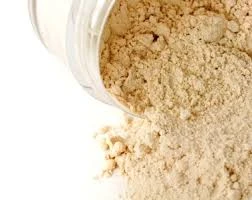Functional Fillers for Plastics Enhancing Performance and Sustainability
In the ever-evolving world of plastics, the incorporation of functional fillers has emerged as a game-changing strategy to enhance materials' properties, sustainability, and overall performance. Functional fillers are additives that, while serving as reinforcing agents, also impart specific functionalities to plastic materials, making them suitable for diverse applications across various industries.
Functional Fillers for Plastics Enhancing Performance and Sustainability
Beyond mechanical enhancements, functional fillers can also impart thermal stability and improved heat resistance. Fillers like mica and graphite are known for their ability to withstand high temperatures without degrading, making them ideal for applications in electronics and automotive components where thermal insulation is paramount. Moreover, the inclusion of flame-retardant fillers can significantly elevate the safety profile of plastics, preventing rapid ignition and slowing down the spread of flames in case of a fire.
functional fillers for plastics

Furthermore, functional fillers can contribute to the electrical properties of plastics. Conductive fillers, such as carbon black or metal powders, enhance the electrical conductivity of polymers, which is essential for applications in the electronics industry, including the production of conductive coatings and components for electronic devices. This opens up new avenues for the development of smart materials that can communicate and interact with their environment.
Sustainability is also a significant focus in the realm of functional fillers. As the world moves towards eco-friendly practices, bio-based fillers made from natural materials such as cellulose, starch, or agricultural by-products have gained traction. These sustainable fillers not only reduce the dependency on petrochemicals but also enhance biodegradability and recyclability of plastics. For example, bamboo fibers and kenaf are increasingly used in composite materials, providing excellent strength while being environmentally friendly.
Moreover, the quest for lightweight solutions in manufacturing has led to the advent of nanofillers. Nano-sized fillers such as clay and silica can improve barrier properties, mechanical strength, and thermal resistance while maintaining a low weight. The ability to optimize the size and distribution of these fillers at the nanoscale provides manufacturers with unparalleled design flexibility, enabling the creation of high-performance and lightweight materials.
In conclusion, functional fillers play a crucial role in revolutionizing the properties of plastics. By enhancing mechanical strength, thermal stability, electrical conductivity, and promoting sustainability, these additives help meet the growing demands of various industries. As research and innovation continue to advance, the future of functional fillers promises even more exciting developments, paving the way for new applications and improved performance in plastic products. The integration of functional fillers is not just about augmenting plastics; it is about redefining their potential to meet the challenges of modern manufacturing and sustainability in an environmentally conscious world.

